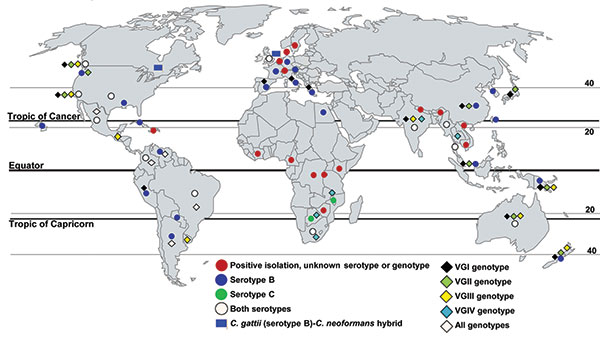Volume 16, Number 1—January 2010
Synopsis
Projecting Global Occurrence of Cryptococcus gattii
Figure

Figure. Worldwide isolations of Cryptococcus gattii from human clinical, veterinary, and environmental sources. Circles indicate serotype information, diamonds indicate genotype information, and rectangles indicate hybrids between C. gattii and C. neoformans. Existing reports and survey are patchy, and several areas between positive regions share tree species (Table 2) and climatic conditions and would most likely harbor the pathogen. Thus, C. gattii is likely to be more widely distributed than documented.
Page created: March 31, 2011
Page updated: March 31, 2011
Page reviewed: March 31, 2011
The conclusions, findings, and opinions expressed by authors contributing to this journal do not necessarily reflect the official position of the U.S. Department of Health and Human Services, the Public Health Service, the Centers for Disease Control and Prevention, or the authors' affiliated institutions. Use of trade names is for identification only and does not imply endorsement by any of the groups named above.